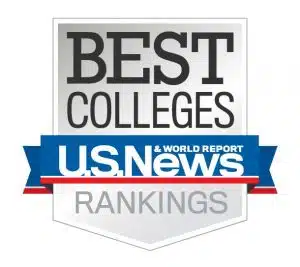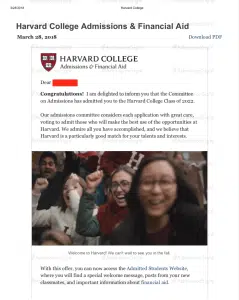Why You Should Join Key Club
Key Club is an international organization that is led by students and that provides members with opportunities to provide service to the community and school, build character and increase visibility, develop leadership and friendship and improve academic achievement.
Key Club gives high school students the opportunity to volunteer for what they believe in while making an impact in their own lives. The organization is also a product of the Kiwanis Organization, and it gives students who are too young to join Kiwanis, a chance to provide their own community service while working with the Kiwanis. There are more opportunities for those who are younger, which will be explained further in this article.
It allows students all over the world to learn to participate in community service and volunteering on their own, making them into independent self-starting leaders while giving them teamwork experience. Key Club members’ students make a positive impact as they serve and work with others in their schools and communities. Each member must be willing to commit at least 50 hours of volunteer work per year to their home, school, and community.
Key Club is a growing organization with a global reach. With 1000s of clubs in more than 38 countries, the impact of Key Club members can be felt all over the world, it’s a great opportunity for international students as well.
High school students perform acts of service in their communities, such as cleaning up parks, collecting clothing, and organizing food drives. They also learn leadership skills by running meetings, planning projects, and holding elected leadership positions at the club, district, and international levels.
AdmissionSight believes that community service plays a big role in the college application process and its important that students make their mark in their communities and schools because of genuine concern and want to help. Key Club is a great organization students can join to prove their initiative and true desire to help the community while learning from Kiwanis members and peers.
Continue reading this article if you’d like to learn more about the Key Club and its partners, the benefits of participating in this incredible organization and how to join.
History
The Key Club was first formed in 1925 in Sacramento, California, with 11 charter members. Two Sacramento Kiwanis Club members, Albert C. Olney and Frank C. Vincent, who were high school administrators first thought up the Key Club. They told their Kiwanis club about the idea of starting a junior service club in high schools that would resemble Kiwanis but have its own classifications based on school interests as well as hold luncheon meetings.
The Key Club first was made up of the “key boys” in the school who wanted to serve the school in any way possible and to create a better school spirit. So, the club was called the Key Club. It began as a vocational guidance program and expanded to become a complete service organization for the whole school. It offered a social aspect to balance its service activities, similar to a Kiwanis club. It is the oldest and largest service program for high school students in the world.
Read more on the Key Club history and timeline here.
The Core Values of the Key Club
- Leadership
- Leadership is about inspiring others around you to share the passion and work for a mission, like community service and volunteering
- Character building
- It aims to help the student build their character through acts of kindness, integrity, and teamwork, so they can become better students and find their motivations
- Motivations are important when joining an extracurricular like Key Club because it proves you work hard for what you are passionate about
- Caring
- Compassion is a key to the Key Club experience, inspiring action and service to one’s community because of your care
- Inclusiveness
- Diversity and inclusion allows for everyone from any and all backgrounds and ethnicities to join Key Club to make a positive difference
Key Club International Objectives
The Key Club has goals to bring school principals, teachers, and students together to make a difference and provide students with an experience that can inspire and improve the community. Key Club members develop initiative and leadership skills by serving their schools while preparing themselves for their future, whether its a path to vocational studies or trying to get into an undergraduate degree program, the community service and leadership experience they’ve gained in Key Club can help.
Objectives and ideas from the Key Club website:
- Give primacy to the human and spiritual, rather than to the material values of life
- Encourage daily living of the Golden Rule (how you act towards others doesn’t depend on how they act towards you) in all human relationships
- Promote the adoption and application of higher standards in scholarship, sportsmanship, and social contacts
- Develop, by precept and example, a more intelligent, aggressive and serviceable citizenship
- Provide a practical means to form enduring friendships, to render unselfish service, and to build better communities
- Cooperate in creating and maintaining that sound public opinion and high idealism which makes possible the increase of righteousness, justice, patriotism, and goodwill.
Key Club Organization
Key Club is an international organization so there are clubs on 6 of the 7 continents, leaving out Antarctica. Key Club is led by a board of trustees who set the direction for the organization, the board is built with committees who guide the strategic plan.
There are 33 organized districts, each district is defined by state or country and is led by a governor (who is a student) who is elected by delegates at the annual district convention. Districts are also divided into divisions, each having a lieutenant governor, who is a student that provides support to clubs.
Each part of the organization is made up of elected officers, it can vary by Key Club but it can include a president, one or more vice presidents, a secretary, a treasurer, an editor, and one director.
Here is the list of the international board, lieutenant governors, and district governors from all over. This is a great leadership opportunity for all students, including international students. There are also various awards such as the President’s Volunteer Service Award or Congressional Volunteering Award that students can win for community service hours, which is another reason Key Club participation and leadership are a great way to spend high school time.
Why Should I Join?
Key Club offers students a chance at community service for their own community, as well as discovering passions. Different clubs come up with different ideas, not only allowing students to use their own creativity to come up with ideas, but also to explore various career paths. Some schools start a recycling program, maybe that sparks an interest and you decide to study environmental science. Or, your Key Club tutors elementary school students and you discover you want to teach. It can do so much for student’s personalities, and help them discover who they are.
Not only can it help you discover who you want to be, but the experiences you have in an organization can give you the confidence to become that person, solve problems, and be influential. And according to Eugene C. Roehlkepartain, Benefits of Community-Based Service Learning, statistics prove that students who give back do well in school.
Key Club and Kiwanis also give scholarships. Key Club has the Youth Opportunities Fund which gives grants to clubs, members, and scholarships to members. Local Kiwanis clubs also give scholarships. Some other community service awards also provide scholarships, but if you’re interested in learning more about scholarships, financial aid, and specifically Ivy League financial aid, visit here.
Finally, Key Club members make their own communities and schools a better place, therefore improving their own reputation in the community and proving leadership. Admissions counselors are constantly looking at how students spend their time, it’s one thing to participate in clubs that teach you, but it’s a big reflection on your personality and character to take part in a club that gives back. Being apart of this organization could also be a great introduction to your personal statement, which can be the most important part of your application when applying to school to present yourself. If you need help crafting your personal statement, we can help you at AdmissionSight here.
How to Join
Each school does Key Club a different way, but it’s very easy to join. Find the Key Club advisor and go from there.
Start a Club
If there is no Key Club at your school, the process is just like starting any club. First, submit a new chapter petition, you’ll need to find a sponsor, an advisor, members, and dues. Then, once it all comes together you can begin! Read more here.
Key Club Programs
- Breakthrough
- This program is exclusively for the members to help in a community other than their own
- Key Leader
- Key Leader is a weekend event for students to work on the Key Club values (this opportunity allows for meeting other peers, and also getting a sneak peek of what a summer program could be like if that’s in your academic plan
- Bring Up Grades
- This program is to recognize students who raise their grades, different food theme parties can be rewarded
- Terrific Kids
- Terrific Kids is a student recognition program that stands for thoughtful, enthusiastic, respectful, responsible, inclusive, friendly, inquisitive, and capable
Key Club Partners
The Key Club has various partners for educational purposes, sponsoring, volunteer programs, and encouragement. These partnerships can provide other pathways into various interests or career paths, as well as, work closely with the Key Club for volunteer opportunities.
Partners include:
- Thirst Project
- The third Project educates students as to how they can join to social change movements
- Landscape Structures
- Landscape Structures works with Kiwanis to bring play structures to communities globally
- Nickelodeon
- Nickelodeon has two large campaigns that encourage global action, the
- Worldwide Day of Play and Nickelodeon’s Get Dirty
- The U.S. Army
- The U.S. Army offers programs for students such as the Reserve Officer Training Corps program
- Up with People
- A program that aims to develop a sense of social responsibility in participants through volunteer work
- Squads Abroad
- An international volunteer group
- Kiwanis Gives Online
- A crowdfunding platform made for Key Club
The Key Club also has cause partners and charities they prefer to work with including:
- Children’s Miracle Network Hospital
- March of Dimes
- Unicef
There are also collaborative partners the Key Club works with:
- K Corps
- K Corps is a youth exchange program that works with the Key Club
- Project Happiness
- Project Happiness aims to inspire and empower members to address bullying
Key Club Alumni
Like many organizations, it has a strong alumni system to allow for networking and keeping in touch. If you are an alum, visit the alumni page here. If you want to get involved in an organization like the Key Club but you are too young or have graduated high school, there are other programs for you.
Beyond Key Club
Key Club is under the umbrella of Kiwanis, which is a global organization of volunteers who are dedicated to improving the world one child and one community at a time. The Kiwanis organization dedicates more than 18.5 million hours to community service and raises over $100 million dollars for local and global causes. Kiwanis has various organizations so almost anyone who wants to get involved can.
- Kiwanis International
- Kiwanis International is for adults to volunteer in their communities
- Circle K International
- Circle K is for college students, its a student-led service organization in 19 nations that is the world’s largest
- If you’d like to make Circle K apart of your undergraduate plan, contact us to see if we can help you get on the right path to attend a school that offers Circle K
- Aktion Club
- Atkion is a service club for adults with disabilities
- Builders Club
- Builders Club is for middle school students to do service work and gain self-confidence
- This is an ideal club for leadership building, and it might be a good chance to participate in the Pre High School Consultation if you are motivated and want to prepare for high school even more
- K-Kids
- K-Kids is a club for elementary school students to learn the fundamentals of service projects
In conclusion, Key Club offers students the chance to participate in life-changing service work and teamwork that can set them up on a path for success in college admissions, college, leadership, community work, and more. The Key Club is the oldest and largest service program for high school students, join to make an impact.









































